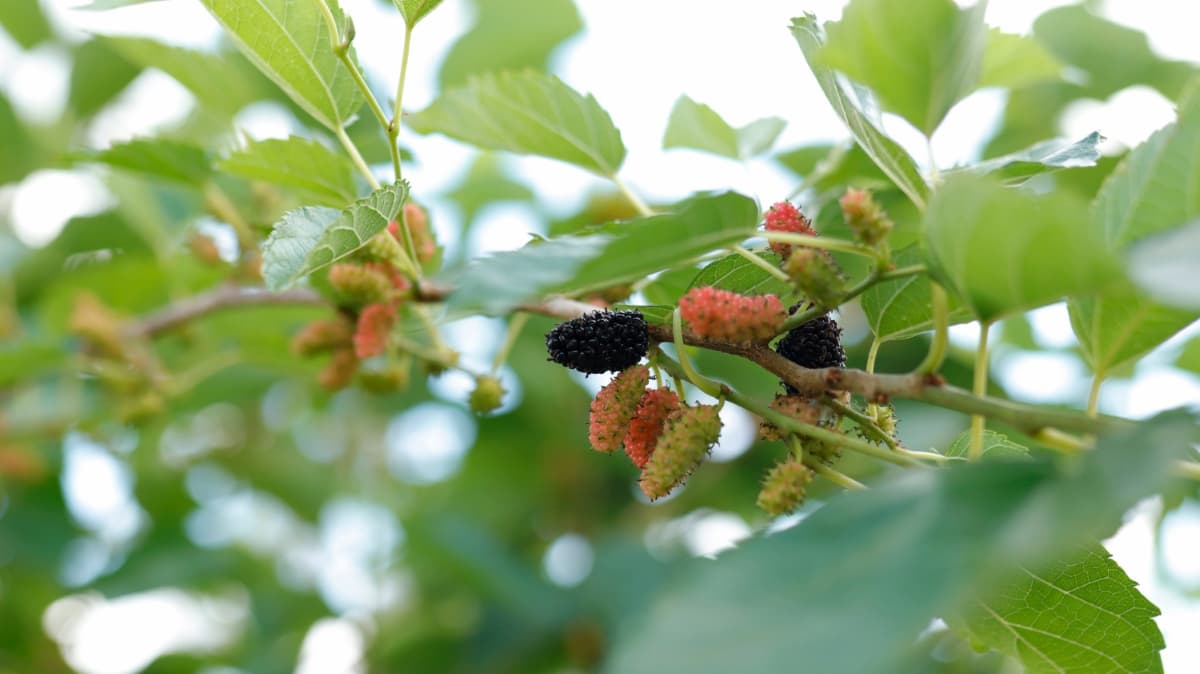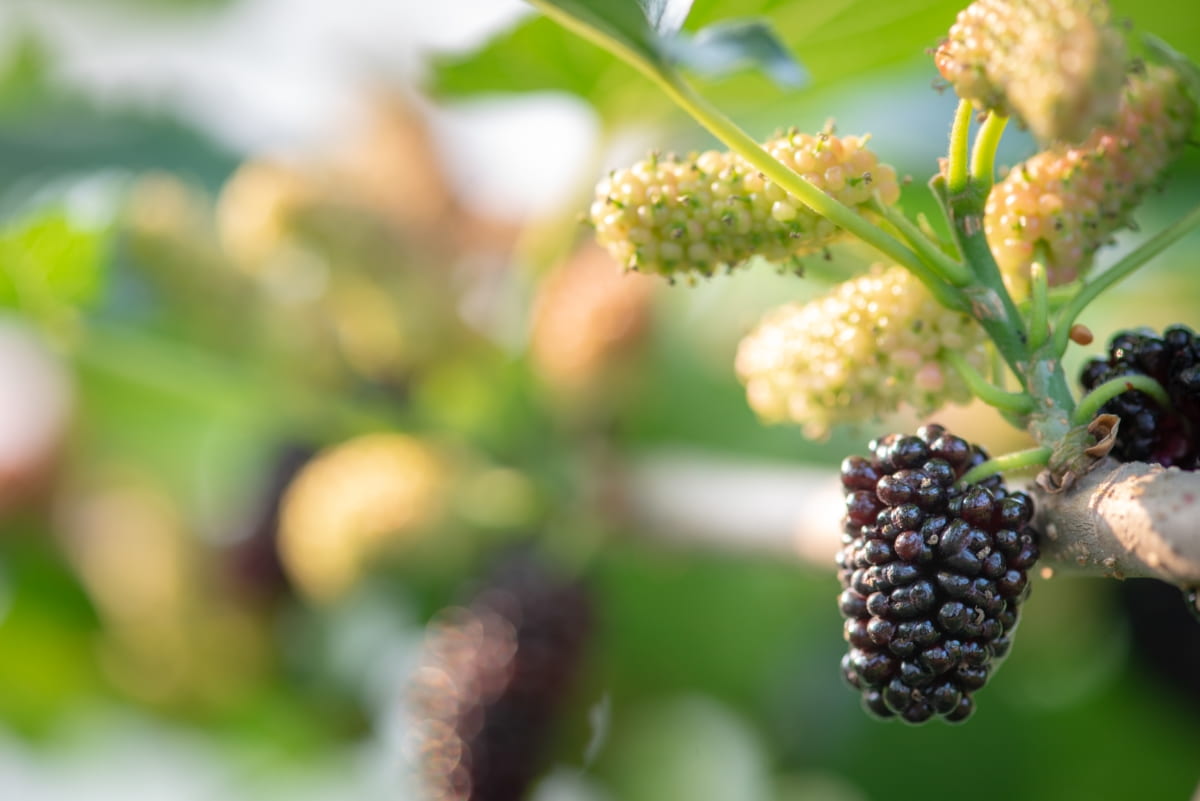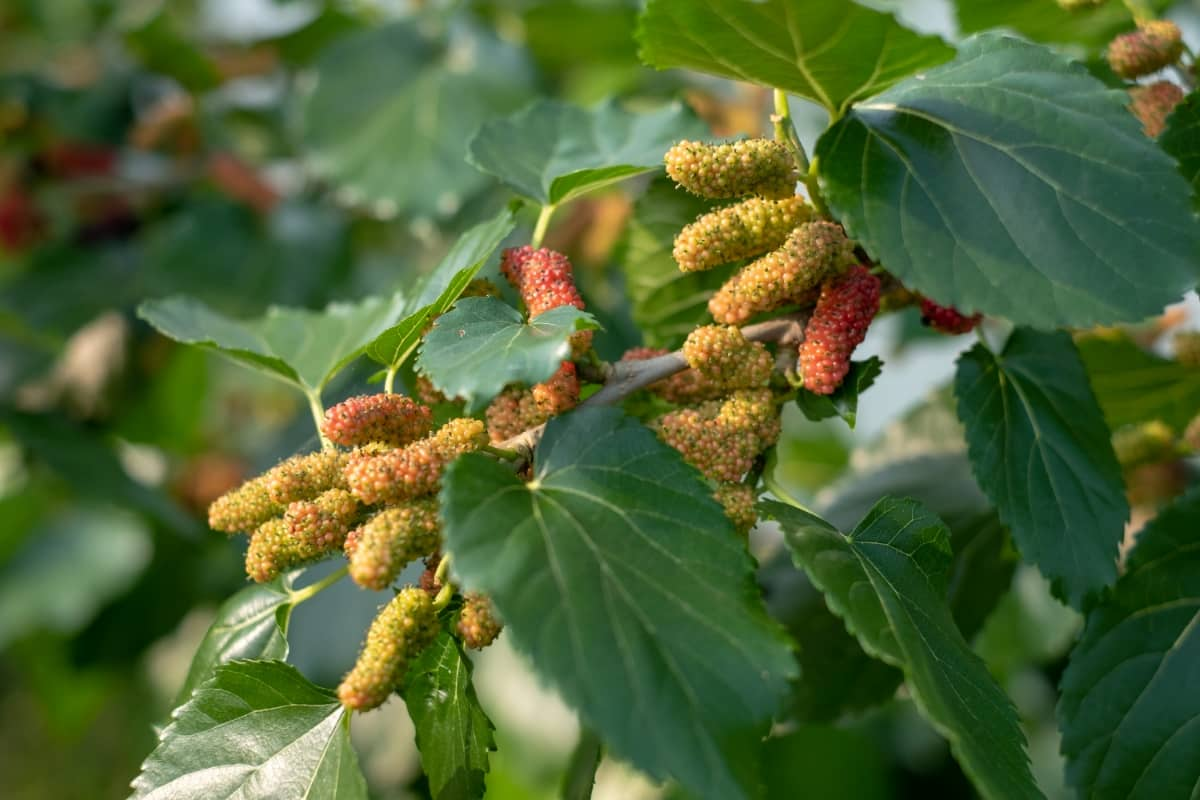Pruning is an essential practice for maintaining the health and aesthetics of a Weeping Mulberry tree. By selectively removing branches and shaping the canopy, pruning helps promote optimal growth, improve air circulation, and prevent disease.

How to Prune a Weeping Mulberry Tree
Best Time of Year for Pruning
The Best Time to Prune Weeping Mulberry is late winter or early spring; this gives your Weeping Mulberry tree ample time to recover and develop new growth before summer arrives. This dormant period allows for optimal healing and minimizes stress on the tree.
Tools and Equipment for Pruning
Selecting the Right Tools
You’ll need a pair of sharp bypass pruners for cutting small branches up to 1 inch in diameter. These pruners have curved blades that slide past each other and provide clean cuts without crushing the branch. For larger branches, a set of loppers will come in handy. Look for loppers with long handles and thick blades that can handle branches up to 2 inches in diameter. In some cases, you may encounter thicker limbs that require a pruning saw. A quality pruning saw with a curved blade will help you make precise cuts through larger branches.
Tool Maintenance and Safety
Proper tool maintenance is essential when it comes to pruning Weeping Mulberry trees. Not only does it ensure the longevity of your tools, but it also promotes safe and effective pruning practices. Before you begin, take a few moments to inspect your tools for any damage. This includes checking the blades of pruners and saws for sharpness, as dull blades can make clean cuts difficult. In addition to regular inspections, it’s important to keep your tools clean after each use. Remove any debris or sap that may have accumulated on the blades, as this can increase friction and hinder cutting efficiency.
Initial Assessment and Planning
Analyzing Tree Structure
When it comes to the Weeping Mulberry Pruning Guide, understanding its structure is crucial. Analyzing the tree’s branches and overall form will help you determine which areas require pruning. Start by identifying any crossing or rubbing branches that may cause damage over time. Look for any branches that are growing inwards towards the center of the canopy, as these can create congestion and inhibit proper air circulation.
Identifying Key Areas for Pruning
First, take a step back and analyze the overall structure of your tree. Search for any limbs that are intersecting or chafing against one another since this can lead to harm over time. Additionally, keep an eye out for limbs that are growing toward structures or power lines – those should be removed. Next, inspect the tree for dead or diseased branches.
Removing Dead or Diseased Branches
Identifying Damaged Limbs
The first thing you’ll want to look for are any branches that appear broken or cracked. These can be caused by high winds, heavy snowfall, or even disease. If left untreated, these damaged limbs can weaken the entire tree and increase the chances of further damage during storms. Another sign of damage is the bark that appears stripped or peeling off. This could indicate an infestation of pests or diseases, which should be dealt with promptly to prevent further spread throughout the tree.
Safe Removal Techniques
Before making any cuts, assess the branch’s size, weight, and angle of attachment to determine the safest way to remove it. For branches that are too large to cut in one go, make an undercut first about 12-18 inches from where you want the final cut. Then, make a top cut slightly further out from the undercut. When removing smaller branches or twigs, use sharp pruning shears to make clean cuts close to nodes or lateral buds. To minimize damage and promote healing, prune along natural lines such as leaf scars or bud rings rather than cutting straight across limbs.
Thinning the Canopy
Benefits of Thinning
One major advantage of thinning is improved air circulation within the tree, which prevents fungal diseases and promotes healthy growth. By removing excess branches and foliage, sunlight can penetrate deeper into the canopy, allowing for better photosynthesis and nutrient absorption.
Another benefit of thinning is reducing weight on limbs, especially during strong winds or heavy rainstorms. This decreases the risk of branch breakage and potential harm to people or property below. Thinning also helps maintain a balanced shape for the tree by preventing overcrowding and ensuring that each branch has enough space to grow properly.
How to Thin Effectively
Trimming Weeping Mulberry is an essential part of pruning, as it helps to maintain its overall health and appearance. To thin effectively, start by identifying branches that are overcrowded or crossing over each other. These branches can create areas of congestion in the canopy, hindering sunlight and airflow. Carefully remove these branches using sharp pruning shears or loppers, making clean cuts just outside the branch collar. When thinning, aim to create a balanced look by removing roughly one-third of the branches.
In case you missed it: How and When to Prune Your Orchids

Shaping the Tree
Principles of Tree Shaping
It’s important to note that shaping should be done gradually over time. Avoid drastic pruning, as this may lead to stress and damage to the tree. Instead, focus on small adjustments each year to maintain and enhance its natural beauty. When Shaping a Weeping Mulberry Tree, consider the overall structure and balance. Look for any branches that are crossing or rubbing against each other and remove them carefully. This will prevent future issues such as bark damage or potential disease spread.
Achieving the Desired Weeping Form
First and foremost, it’s important to understand the principles of tree shaping. The weeping form is all about creating graceful, cascading branches that droop down towards the ground. To achieve this, you’ll need to carefully select which branches to prune and how much to remove.
Start by identifying any upward-growing or crossing branches that disrupt the overall flow of the tree’s canopy. These should be pruned back to their point of origin or removed entirely if necessary. Pay close attention not only to horizontal growth but also vertical growth – anything that doesn’t contribute to the desired weeping shape should be removed.
Pruning Young Trees
Special Considerations for Saplings
One important consideration is timing. Saplings are still establishing their root systems and need time to adjust before undergoing any major pruning. It’s best to wait until the tree has been in the ground for at least two years before attempting any significant pruning. Another key consideration is the size of the branches being pruned. Since saplings have smaller limbs compared to mature trees, it’s important not to remove too much foliage or branch material at once.
Encouraging Healthy Growth
When it comes to Pruning Young Mulberry Trees, one key aspect of encouraging Weeping Mulberry Tree Health is regular pruning. Additionally, pruning promotes air circulation throughout the canopy, reducing the risk of fungal infections. Proper watering and fertilization also play a crucial role in supporting healthy growth. Mulberry trees prefer moist soil but do not tolerate waterlogging well. It’s important to provide consistent moisture without overwatering.
Caring for the Tree Post-Pruning
Wound Treatment and Healing
Proper wound treatment and healing can help prevent pests, diseases, and decay from affecting your Weeping Mulberry tree. It’s crucial to remember that not all wounds require treatment. Small cuts or nicks will generally heal on their own without intervention. However, larger wounds or areas where large branches were removed may benefit from some extra care. To promote healing, you can apply a wound dressing or sealant specifically designed for trees.
Adjusting Watering and Fertilization
After pruning, it’s important to adjust your watering routine to support the tree’s recovery process. When watering, aim for slow, deep soakings rather than frequent shallow waterings. This allows the water to penetrate deep into the root zone, encouraging strong root development. In terms of fertilization, a balanced fertilizer specifically formulated for trees is recommended. Apply the fertilizer according to instructions, typically in early spring or late fall when nutrient uptake is highest.
Addressing Common Pruning Challenges
Overgrown Trees and Rejuvenation Pruning
When it comes to pruning an overgrown Weeping Mulberry tree, rejuvenation pruning can be a game-changer. This technique involves removing large sections of the tree’s canopy to stimulate new growth and restore its health and shape. Before diving into rejuvenation pruning, it is important to assess the tree’s current state.
Look for signs of stress, such as dead or diseased branches, crowded foliage, or imbalanced growth patterns. These indicators will help guide your pruning decisions. To start the process of rejuvenation pruning, focus on removing any dead branches first. These branches not only hinder healthy growth but can also serve as entry points for pests and diseases.
Dealing with Pest and Disease Issues During Pruning
It’s crucial to identify the specific pests or diseases affecting your tree. Common culprits include aphids, scale insects, spider mites, and fungal diseases like powdery mildew or leaf spot. By accurately diagnosing the issue, you can choose the appropriate treatment method.
For pest infestations like aphids or scale insects, consider using natural remedies like neem oil or insecticidal soap. In cases of fungal diseases, proper sanitation practices play a vital role in prevention. Remove any infected branches during pruning and dispose of them properly to avoid spreading spores around your garden.
Seasonal Pruning Care
Spring and Summer Maintenance Tips
Spring and summer are crucial seasons for maintaining the health and beauty of your Weeping Mulberry tree. During this time, you’ll want to focus on a few key Weeping Mulberry Maintenance tasks that will keep your tree thriving. First and foremost, regular watering is essential during these warmer months. Make sure to water deeply and thoroughly, ensuring that the roots receive adequate moisture.
Preparing for Winter Post-Pruning
One of the key things to do after pruning is to clean up any debris or fallen branches around the tree. It also reduces potential hazards such as slipping on wet leaves or tripping over branches. Another important task is to provide proper insulation for your tree.
Mulching around the base with organic materials like wood chips or straw can help regulate soil temperature, retain moisture, and protect roots from freezing temperatures. In addition to mulching, wrapping the trunk of your Weeping Mulberry tree with burlap can provide extra protection against harsh winter winds and frost damage. Be sure to secure it tightly but not too tight, as this could cause damage itself.
In case you missed it: How and When to Prune Hydroponic Plants: Benefits, Techniques, and Methods

Conclusion
Pruning a Weeping Mulberry tree may seem like a daunting task for beginners, but with the right knowledge and tips, it can be easily accomplished. By understanding the importance of pruning, Mulberry Tree Care Pruning, and selecting the appropriate tools, you can ensure that your tree remains healthy and beautiful year after year.
Note: The images presented in this post are intended solely for representation purposes. The images are meant to serve as visual aids and should not be relied upon as accurate representations of their real-life counterparts.
- How to Grow Hibiscus from Flower
- Plantation Ideas for Home Decoration: A Beginners Guide
- Flower Garden Designs and Layouts for Beginners
- Planting and Spacing Techniques in Papaya: A Beginner’s Guide
- Growing Gold: Essential Techniques for Planting Pineapples
- How to Make Kalanchoe Plant Bushy: Home Remedies and Solutions
- 11 Reasons Why Your Gardenia is Not Blooming: Home Remedies and Solutions
- Eco Elegance: The Guide to Designing a Drought-Tolerant Landscape
- Gardening on a Slope: Strategies for Hillside Landscaping